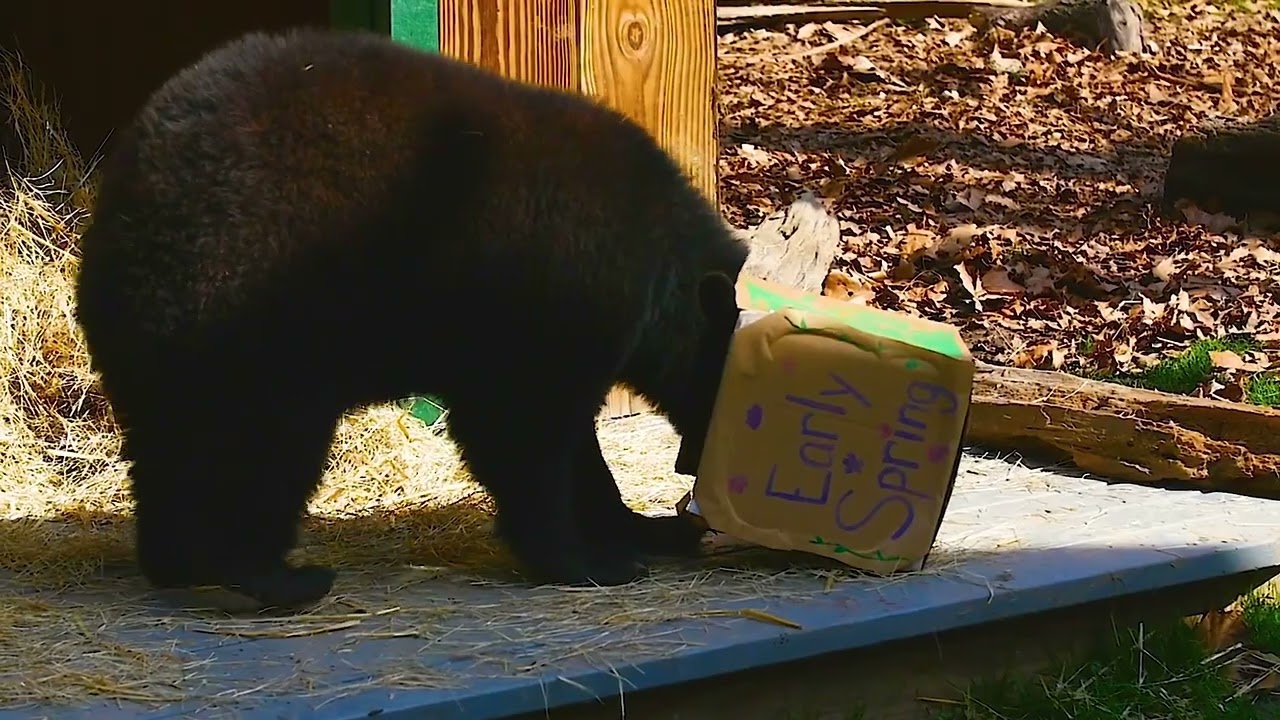– How animals’ behaviors can be indicative of weather patterns.
– The tradition of Groundhog Day and its folklore connections.
– An in-depth look into the life and habits of the Louisiana black bear.
– The ecological and cultural significance of early spring predictions.
As winter’s chill begins to loosen its grip, the natural world whispers promises of the renaissance that is spring. In this dance of seasons, humans have long looked to animals for hints of what the weather has in store for us. Groundhog Day is perhaps the most famous of these weather-predicting traditions, and this year, a Louisiana black bear named Sassafras has joined the forecasting fray.
Traditionally, on February 2nd, if the groundhog, such as Punxsutawney Phil, sees his shadow, we’re in for six more weeks of winter. With no shadow in sight, an early spring is on the horizon. This year, Sassafras stepped into the role of meteorological prophet, echoing Phil’s prediction for an early arrival of spring’s warmth and color. But what drives these fascinating customs, and is there any truth behind the furry forecasts?
Groundhog Day roots stretch deep into history, intertwining with ancient European weather lore and the Christian holiday of Candlemas. It is a cultural tapestry, interwoven with the belief that nature, particularly its most sentient beings, harbors the secrets of the forthcoming weather. However, the accuracy of these predictions is more folklore than science. Studies suggest the groundhog’s success rate hovers around 39%, hardly a reliable source for your seasonal wardrobe change.
But could there be a nugget of wisdom behind the legend? Animals are inextricably linked to their environment, with many species displaying behaviors that change with the weather. From birds migrating to insects emerging from dormancy, animals can signal a seasonal shift.
The Louisiana black bear, Ursus americanus luteolus, is one such creature whose behaviors can hint at changing weather patterns. Despite that, it’s not known for casting shadows like its groundhog comrades; these bears respond to the lengthening days and warming temperatures of late winter and early spring. They typically emerge from their winter dens as spring dawns, their activity a genuine sign of seasonal transition.
Once on the brink of extinction, the Louisiana black bear has made a remarkable comeback—a testament to conservation efforts and regulations. Residing in the bottomland hardwood forests, swamps, and marshlands, they can adapt their diets seasonally, foraging for fruit, nuts, and vegetation or taking advantage of crops. These bears hibernate less and forage more during mild winters, which can serve as a clue to the mildness of the season.
As a keystone species, the Louisiana black bear’s behaviors and health profoundly impact its ecosystems. It plays a role in seed dispersal and population control of certain prey species, making its activity patterns of interest to ecologists and biologists alike.
As we consider the onset of an early spring, the implications ripple far beyond the forecast of a bear. Early spring can lead to ecological events – blossoms unfurl on fruit trees, migratory birds return, and pollinators like bees and butterflies begin their vital work. These changes affect not just wildlife but also agriculture and human activities. Farmers and gardeners watch the unfolding of the seasons closely, as a false spring can damage crops, and an early one can prompt a rush of planting and growth.
However, the splendors of an early spring are not without potential consequences. A premature season disrupts life cycles and natural rhythms, exemplified by buds blooming before pollinators are active or migratory birds arriving due to a lack of available food. Thus, while we may cherish the early warmth and blossoms, the broader ecological perspective offers a more complex picture.
Despite the playful predictions of creatures like Sassafras, scientists turn to climate models and atmospheric research for their forecasts. Climate change throws even more variables into this intricate equation, as rising global temperatures can disrupt the established patterns that wildlife and humans have come to expect.
As natural world enthusiasts, we can take a page from the book of animals like the Louisiana black bear. Observing nature’s cues encourages a deeper connection with our environment and a greater respect for the intricate tapestries of life that unfold with each changing season. While we may not rely on their shadows to guide our calendars, we can admire their adaptability and resilience- qualities we humans would do well to emulate as we face our environmental challenges.
Ultimately, the early spring forecast, be it from a bear or a groundhog, serves as a whimsical reminder of the joy in the changing seasons and the enduring fascination with the wisdom of the wild. Let us embrace the unpredictable nature of the weather, prepare to adapt as our fellow creatures do, and step forward with hope into the newly budding life that spring promises. Whether an early spring stays true to prediction or not, we’ll continue to celebrate the mysteries and majesty of the natural world – each season revealing its unique wonders.
*****
Source Description
Louisiana black bear Sassafras tried her hand at forecasting the weather for Groundhog Day. After checking her options, she agrees with her pal Punxsutawney Phil. Sassafras decided that we can expect an early spring this year! 🌷🪻🐻

